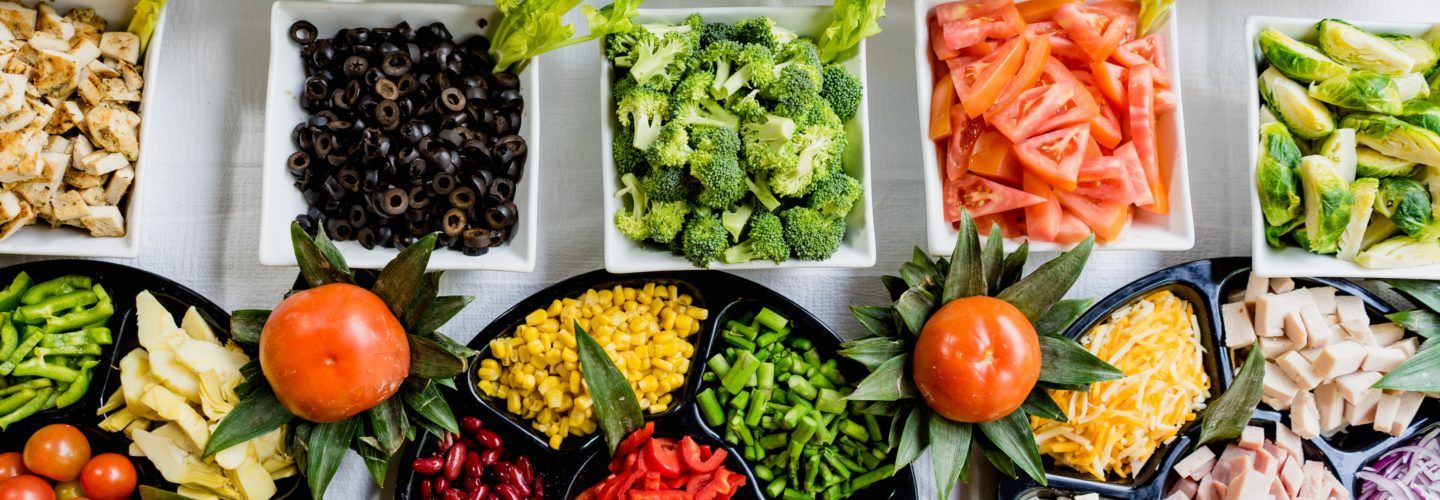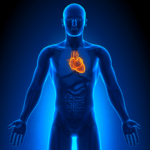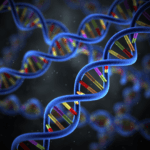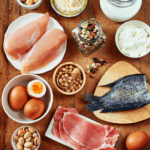Note to readers: This post was written in September of 2012. PLEASE do not ask me why I eat ‘this’ or why I don’t eat ‘that’ — as what is shown here does not necessarily reflect what or how I eat today (or more importantly, how you should eat). My diet evolves constantly, due to my constant tweaking and self-experimentation. Over time, I’ll share it here and there, but what I eat is not at all the focus of this blog. I ask that you refrains for asking questions about what I eat your comments.
For reasons I don’t fully understand the most read post on this blog is one I wrote very quickly and with very little thought. I wrote it in response to a question I’m asked all the time, “What do you actually eat?” The post, aptly titled, What I actually eat, has more than twice the traffic of the next three most read posts combined. Go figure.
After a full year in “strict” (i.e., no “cheat” days) nutritional ketosis I wanted to experiment with other eating patterns. I had been reading about intermittent fasting (IF), and had a few discussions and exchanges with Mark Sisson and Robb Wolf about it. Though I don’t know Brad Pilon or Martin Berkhan personally, I’d also read a few interesting things they had written.
Why the change?
My curiosity was sufficiently piqued to break a golden rule – if it ain’t broke, don’t fix it.
I was very happy after a year of nutritional ketosis, but I did wonder if I could improve on a few things. For starters, as my cycling season was about to ramp up, I wondered what it would be like to weigh 75 kg (165 pounds) instead of my steady-state weight of about 78 kg (172 pounds). I know 3 kg does not sound like a lot, but it can make a huge difference when riding up Mount Palomar, assuming one can preserve power output. I also liked the idea of not spending so much time eating. As you probably know, I’m pretty obsessive about how I utilize the 168 hours in each week and resent anything that takes me away from my family, my work, and my training. (This includes sleep, which I wish I could figure out a way to thrive without.)
In the end, I think Mark Sisson finally just egged me on enough to agree to at least give it try – even just one day per week. And with that, I embarked on the next phase of my nutritional odyssey.
I decided, in early May, to start with the following protocol: one meal per 24 hours, twice a week. On the other 5 days I consumed my usual keto-diet. On the two IF days I would just eat one meal at around dinner time. I still consumed normal amounts of liquids (water, coffee, tea) and supplements (see list below), with one exception – on fasting days I doubled the amount of sodium I supplemented via bouillon from 2 gm per day to 4 gm per day.
Like all nutritional changes, this one took some getting used to. Because I exercise in the mornings, on fasting days I would get pretty hungry by about 10 or 11 am. Interestingly, though, by about 2 pm, as my blood glucose levels would be between 60 and 70 mg/dL, I would start to feel completely fine. In fact, by about 5 or 6 pm, just before eating my meal, I found I wasn’t really hungry. This may have been due to the fact that my B-OHB levels were usually above 3 mM by this time of day.
Why do I call it “IFIK?”
Not surprisingly, after eating 100 gm of protein and 40 gm of carbohydrates in one sitting, my B-OHB levels would fall, often below 0.5 mM, the practical threshold of nutritional ketosis. Usually within 24 hours I’d be back to my normal levels, generally between about 1 and 2 mM. But, the cycling in and out of ketosis was new to me, hence the phrase “intermittent fasting, intermittent ketosis,” or “IFIK.” I guess you can see why I didn’t end up in marketing – “if-ik” doesn’t really have a nice ring to it.
The purpose of this post is not to provide a detailed overview of IF or ketosis, but rather to address the following common questions I often get asked in response to the original post on what I ate:
- Question: Peter, why do you eat so much dairy? Answer: I don’t. That was a year ago. I did eat a lot of dairy, and seemed to tolerate it quite well. I realize that’s not true for everyone. Regardless, I seem to eat much less today.
- Question: Peter, is ketosis for everyone? Answer: Of course not. Besides oxygen and water, few things are.
- Question: Peter, why do you eat so much meat? Answer: I don’t. In fact, some days I don’t eat any. Other days I do. I obviously don’t think there is anything harmful with eating meat (read this post for a refresher), but I’m quite happy eating lots of non-meat items, too.
- Question: Peter, how can anyone possibly do anything athletic without carb loading? Answer: It’s easy. Anyone can do it, if they are just patient and let their body adapt.
- Question: Peter, you eat like a freak (ok, not really a question!) Response: And your point is?
What happened after several months of IFIK?
Interestingly, I did lose weight. After briefly hitting 163 to 164 pounds, I settled out at where I am right now, about 165 to 166 pounds, right at my 75 kg target. I have not yet repeated a DEXA scan to confirm, but I suspect I lost a bit of muscle, along with more fat, probably at about a 1:2 ratio. My last DEXA measured a body fat of about 9%, and I suspect I’m about the same, though my waist is half an inch smaller than when I started, so I may be closer to 8%.
Why do I think this happened?
In the IF community there are really two (maybe more) theories on why I lost weight. I won’t describe them here in any detail, but will do so in subsequent posts. One hypothesis is that I’m simply consuming fewer of the same high quality calories than I did before. The other hypothesis is that the physiologic response to IF (rather than the response to prolonged fasting) is to increase my REE during the period of IF, possibly through the up- and or down-regulation of various hormones. Of course, it could be a combination of these, or something entirely different, too.
Drumroll….
Before getting to the part that folks who are still reading probably care about, let me point out a few differences between what I eat today and what I ate a year ago.
- I consume, on average, fewer calories per day. I am also lighter, and we know TEE varies with body mass, so it’s not surprising that most days I am not eating over 4,000 kcal, as I used to. Of course, one might argue my body has become more metabolically efficient at utilizing substrate, and so my REE is lower than it was a year ago. Finally, I do exercise less than last year. Hence, there are many explanations for this difference.
- I consume less dairy. Don’t read too much into this. There is nothing deliberate about it, just an observation of my behavior.
- I consume less meat of all varieties. Again, don’t read too much into this. I have no explanation except that I seem to crave it in lower amounts and less frequently.
- I consume more overall carbohydrates, though still virtually zero sugar or refined carbohydrates. Most of this additional carbohydrate is in the form of nuts and SuperStarch.
- I consume virtually zero sugar substitutes, except for the little bit in my SuperStarch and protein powder (sucralose). I also drink, at most, about one diet soda per month.
- I spend less money on food.
- I spend less time eating.
- Currently I only eat three meals per day about once a week. I eat two meals per day probably 4 times per week, and one meal per day twice per week.
To calculate the nutritional content of my intake I use a piece of software called Nutritionist Pro, which is not for the faint of heart. It’s one step removed from a DOS prompt. In addition to costing about $600 a year, it’s not exactly user-friendly. I’d probably describe it as “user-hostile,” actually. But, it’s really accurate and has a database that is unrivaled. The reports, once you learn how to generate them, are very good, also.
Three consecutive days of representative eating
Keep in mind, I don’t count my calories or weigh my food normally. I do it periodically, such as at this time, when I’m curious as to what I’m actually eating. I believe I’m able to do so without eliciting the Hawthorne Effect, but obviously one can never be positive.
Tuesday
- 7 am — morning workout – flat intervals on bike (75 minutes).
- 1 pm – Nicoise salad:2 cup butterhead lettuce, 1 tomato, 10 black olives, 8 oz tuna steak, 1 hard boiled egg, 0.5 cup red onion, 2 oz lemon juice, 4 tbsp olive oil, 1 tbsp mustard.
- 7 pm – Chicken salad with nuts:2 cup romaine lettuce, 1 tomato, 0.5 cup cucumber, 2 oz cashews, 2 oz walnuts, 8 oz chicken breast, 6 tbsp olive oil, 2 tbsp balsamic vinegar.
Daily totals:
Carbohydrate – 89 gm
Protein – 131 gm
Fat – 218 gm (about 15% SFA, 70% MUFA, 15% PUFA)
Calories – 2,900
Wednesday
- 6 am — morning workout – high intensity dry land (90 minutes).
- 3 pm – The “Peter Kaufman shake” (named after my good friend, Peter Kaufman at Generation UCAN, who hooked me up with the recipe):
4 oz heavy cream, 8 oz zero-sugar almond milk, 1 pack chocolate protein SuperStarch, 2 tablespoons almond butter, 8 gm additional glutamine, 1 tray of ice cubes (blended to smoothie consistency). - 7 pm – Chicken-nut omelet:
4 eggs, 0.5 avocado, 3.5 oz cheddar, 3 oz red onion, 2 oz walnuts, 2 oz cashews, 4.5 oz chicken thigh, 2 tbsp butter
Daily totals:
Carbohydrate – 60 gm (30 gm of which is SuperStarch)
Protein – 151 gm
Fat – 226 gm (about 40% SFA, 35% MUFA, 25% PUFA)
Calories – 2,800
Thursday
- 7 am — morning workout – hill intervals on bike (75 minutes).
- 5 pm – Attia super salad:
1.5 cup romaine lettuce, 0.5 cup cucumber, 0.25 cup mushroom, 1 tomato, 3 oz sliced T-bone steak, 2 oz cashews, 2 oz peanuts, 2 oz macadamia nuts, 8 tbsp olive oil, 2 tbsp balsamic vinegar. - Between 6 and 8 pm – after-dinner snack consisting of:
3 oz cashews, 1 oz almonds, 2 oz peanuts, 1 oz macadamia nuts, 2 cups of coffee with a total of 6 tbsp heavy cream.
Daily totals:
Carbohydrate – 94 gm
Protein – 93 gm
Fat – 369 gm (about 20% SFA, 65% MUFA, 15% PUFA)
Calories – 3,800
My daily supplements
Note: I am only listing the products I use, and not trying to convince you that my brand of vitamin D is superior to another. If I feel strongly about a product, I note it. But this is not a product pitch. I don’t make one penny off you buying any of these products.
Fish oil
1 tablespoon of Carlson’s Very Finest Fish Oil, providing 2,400 mg EPA and 1,500 mg DHA. I do feel this is a superior product and I’ve had detailed toxicology analytics conducted on the product to confirm the absence of lead, arsenic, mercury, and other toxins.
Vitamin D
5,000 IU D3 in gel capsule, by NOW.
Magnesium
400 mg magnesium oxide by Nature Made.
Sodium
2,000 mg in the form of bouillon, typically by Knorr.
MCT oil
Either 2 or 3 tablespoons, depending on activity level, by NOW.
Probiotic
2 capsules of Mark Sisson’s Primal Flora, providing 60 billion CFU. The reason I use Mark’s product is because I know and trust him, and I know how much homework he did in formulating this product.
One of the topics I’m currently getting steeped in is gut biota, and I’m hanging out a lot with a San Diego expert on the topic, UCSD Professor Larry Smarr, who has repeatedly sequenced his entire gut biome, with the help of Craig Venter at Synthetic Genomics and others at MIT. As Larry points out, the challenge of “moving the needle” with probiotics is that they only provide the aerobic bacteria while, of course, most of our gut biome is anaerobic. Stay tuned for much more on this topic.
Closing thoughts
- My performance, especially in light of my reduced training volume (or maybe because of it!) has not deteriorated. In fact, this week I had 3 best times in 3 of the activities I do weekly (tire flipping/sledge hammer/plyometic routine (1:04); short sprint up 15-18% grade (0:39), and long sprint up 8% grade (3:29)). It’s possible the added carbohydrate, relative to my constantly ketotic state, has facilitated this, despite consuming about 15% of the carbohydrate I used to consume on my “standard American diet” circa 2008.
- I will discuss the impact on my biomarkers in a separate post.
- The only drawback I’ve noticed of IFIK so far is that I’ve inadvertently turned my daughter off nuts. About 4 months ago, after having three consecutive identical dinners (chicken-nut-salad), she called my wife into her room as she woke up and said, “Mommy…we need to talk. We need to have something different for dinner tonight. We can have steak…we can have sausage…we can even have regular salad without nuts…but I can’t have nuts in my salad anymore!” Poor girl… So now I have to make my salads separately.
Photo by Dan Gold on Unsplash






569 Comments